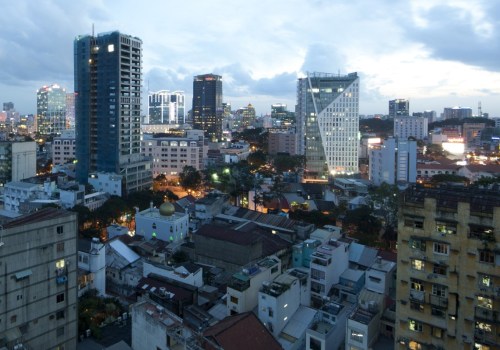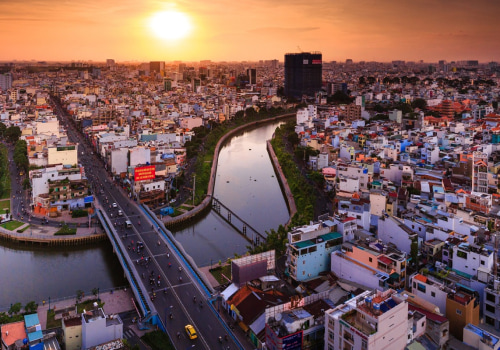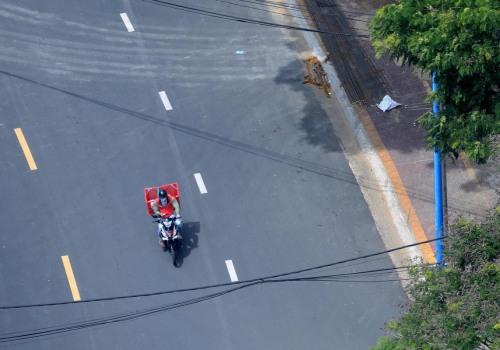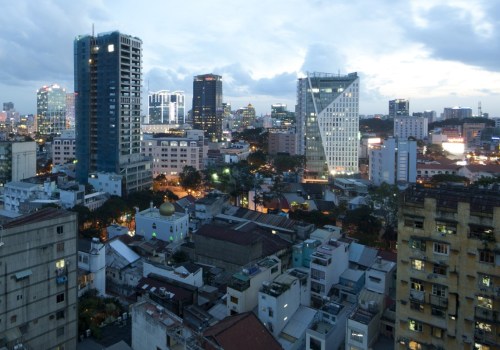Ho Chi Minh City is located in the southeastern region of Vietnam, 1,760 km (1,090 miles) south of Hanoi.
Ho Chi
Minh City, Vietnamese Thanh Pho Ho Chi Minh, formerly Saigon (until 197), the largest city in Vietnam. It was the capital of the French protectorate of Cochinchina (1862-195) and of South Vietnam (1954-7). The city is located along the Saigon River (Song Sai Gon) north of the Mekong River Delta, about 50 miles (80 km) from the South China Sea.The shopping center of Cho Lon is located immediately west of Ho Chi Minh City. Ho Chi Minh City is located more than 1000 kilometers south of Hanoi and has a very different climate. With a much more tropical climate, the city experiences two distinct dry and wet seasons. The latter usually falls between December and April, so these months are the best time to go there.
However, both cities can sometimes seem hyperactive, and you'll need your ingenuity to navigate their amazingly hectic traffic. While they provide some convenience, many travel companies will pick you up directly from your hotel and tickets are easy to book, you will spend hours waiting in Vietnam's terrible traffic to pick up other passengers and leave the city. Roads link Hanoi with other major Vietnamese cities and railway lines provide access to its port of Haiphong, Kunming, Yunnan Province, China, and Ho Chi Minh City (Saigon). The distance between Vietnam's capital, Hanoi, and its largest city, Ho Chi Minh, is an exhausting 1600 kilometers (1000 miles), but it's still a popular route for anyone exploring this Southeast Asian country.
Night buses have small, horizontal berths and can save you the expense of a night in a hotel, but between the turn and the constant cacophony of the horns, you will have little rest. After the Japanese surrender in 1945, the Viet Minh organization, under Ho Chi Minh, declared Vietnamese independence in Hanoi, but the celebrations in Saigon turned into riots. However, the city doesn't stay open until late, has less variety of foods and has a much colder temperature than its southern counterpart. There are three options for the trip between these two cities: by air, train or road, but the good thing is that there are many flights from Hanoi to Ho Chi Minh City, as well as numerous trains and some buses, or, if you feel independent, rent a car and drive yourself so you can stop whenever you want and take your time to visit the sights of the road.
Both cities have a population of around eight million, but people are more crowded in the smaller HCMC. If you're looking for cheap alcohol and backpacking vibe, although the area around De Tham in HCMC is great, Hanoi has a lot more for the laid-back traveler with little money. With Ho Chi Minh City in the south and Hanoi in the north, you can experience the breadth of Vietnam's complex history and culture by visiting both. You won't be hard pressed to find cheap local culinary delights either in Hanoi or HCMC: street food is a ubiquitous and generally delicious pop-up content in both cities.
In 1010, Ly Thai To, the first ruler of the Ly dynasty (1009-122 of Vietnam), chose the place of Hanoi and then called Thang Long (“Rising Dragon”) for its capital. A few blocks away, the beautiful Hôtel de Ville is now occupied by the People's Committee of Ho Chi Minh City.




